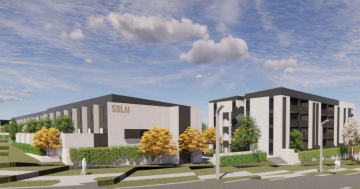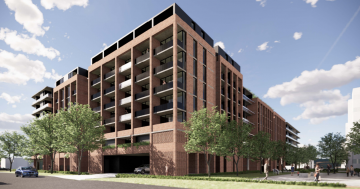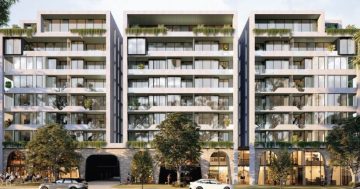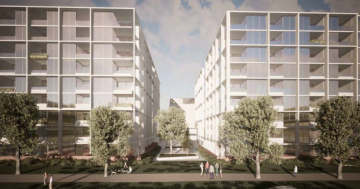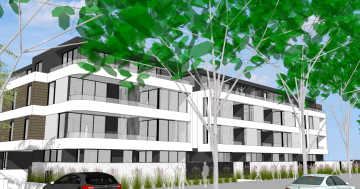
Our predicament = offensive second hand smoke drifting through our unit
My partner and I are being forced to put up with daily smoke drift problems in the multi-unit development we live in. These problems have been occurring since January 2014 when the building became occupied for the first time. Our apartment has been impacted on a daily basis by second hand smoke drifting in from seven other apartments (five below us and two above us).
What are we seeking to do to help ourselves?
We wish to determine how the Territory Plan can be influenced to include designated smoking areas (DSA) in new multi-unit developments. The cost to install a designated smoking area and smoke-free design features is least expensive during the design stage. The cost would be reimbursed to the developer by increasing the price of every unit that is to be sold. The smoke-free features in the building design would be identified in the contracts for sale that each prospective buyer would be required to read and sign, which influences the new unit owners from day one.
We ultimately wish to find a way to influence the future developers of nearby blocks that are designated for future multi-unit developments, to offer at least a portion of the residential dwellings as a dedicated smoke-free environment so that we can gain the opportunity to purchase a unit off the plan in a building that will be managed as a smoke-free environment from the beginning. We would prefer to move into a nearby new building that is promoted up front as smoke-free, rather than have to endure the daily smoke drift problems we continue to experience where we currently live. An off the plan situation is best for us as we have some design changes we wish to incorporate to assist us to cope with some disabilities and prepare for living through our retirement years.
If changes could be implemented within the Territory Plan, the planning process would then be seen to be aligned with the direction that new legislation is heading to reduce the incidence of smoking within the community and decrease the subsequent cost of smoking upon the jurisdictions budget.
What is happening in the ACT already?
Due to the lack of foresight by the developer and builder of the apartment complex we live in, our owners corporation (OC) is left to deal with the smoke drift problem as no provision has been made in the design, or in the purchase contract, for a designated smoking area (DSA) designed into the building. The OC has established a smoke-free policy in our first set of House Rules to try and manage the situation but that was not able to be done until 6 months after the smoke drift problem started. The enforcement of the smoke drift rules is proving to be a very long and challenging process due to the lack of legislative support and uncooperative attitudes of smokers.
A letter we received from the Chief Minister in March 2015 indicates that the ACT Government is committed to finding solutions to manage smoke drift in multi-unit developments, and that ACT Health is expecting to conduct a public consultation this year concerning the smoke-free topic. We intend to make a submission to any future public consultation to raise the following issues for consideration:
- The majority of the community are non-smokers so multi-unit building design should cater for the needs of the majority rather than allow the minority of smokers to dictate undue influence over design decisions;
- A unit balcony can certainly be classified as an enclosed eating area given five of the six sides are usually covered and families enjoy entertaining and eating a meal together on their balconies. Current legislation requires a four-metre distance between outdoor enclosed eating areas and designated outdoor smoking areas, and a ten-metre distance between a smoker and a children’s playground.
- Balconies in multi-unit developments are located too close together to prevent smoke drift causing a nuisance to adjoining residents or to children playing on balconies. Up to three levels of balconies can be located within 10 metres of each other, and smoke will drift up and down the sides of a building, so a child playing on a balcony could be exposed to smoke drift from up to four balconies as the ten-metre distance would extend to balconies located two levels above or below their own balcony.
- Current Building Code of Australia (BCA) and energy efficiency ratings aim to reduce heat loss and increase energy efficiency; however, condensation is a known result of compliance with these energy efficiency requirements of BCA. Builders recommend that residents in units keep doors and windows open regularly to provide natural ventilation to remove humidity and reduce the incidence of condensation; however, this is not possible when there is a constant threat of secondhand smoke drifting into your unit.
- Current balcony design approaches prevents non-smoking residents being alerted to impending smoke drift issues before the smoke drift infiltrates throughout their apartment, so a solution needs to be emphasised in the Territory Plan to incentivise developers to want to deliver buildings that cater for the majority of non-smokers in our community.
In conclusion…While we wait for the ACT Health consultation on smoke-free issues to be publicised later this year, we felt it would be useful to raise the issues here to see what other members of the ACT Community feel about this matter. We have created a few webpages on the internet to capture the facts about our situation so that it is easier to share these issues with others – see https://sites.google.com/site/livingsmokefreeinact/.












